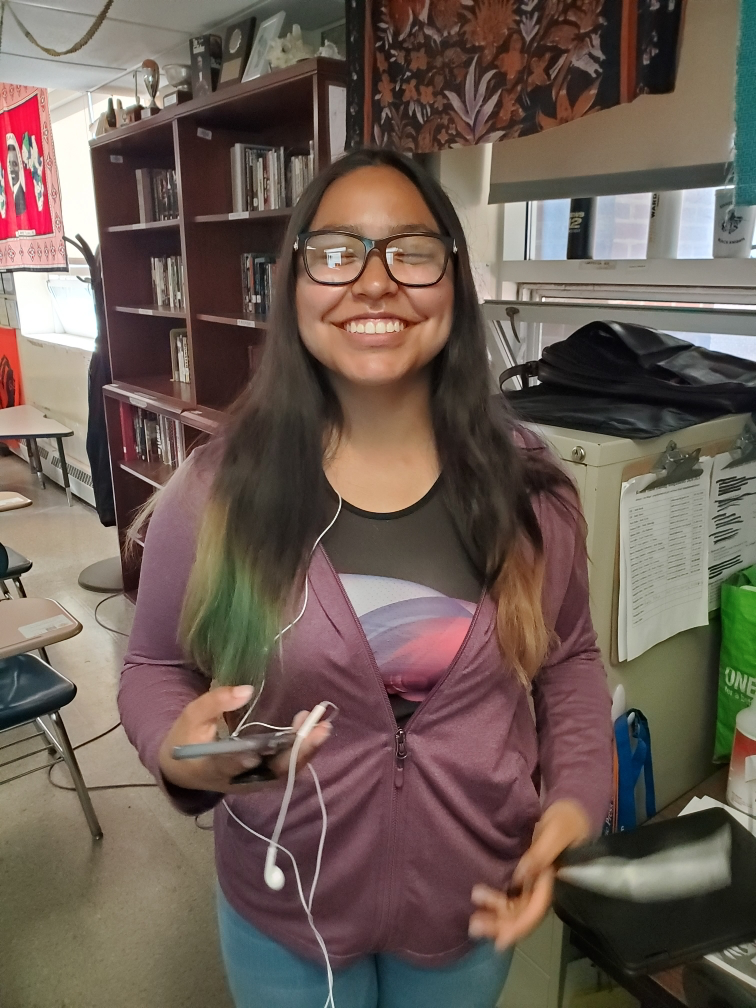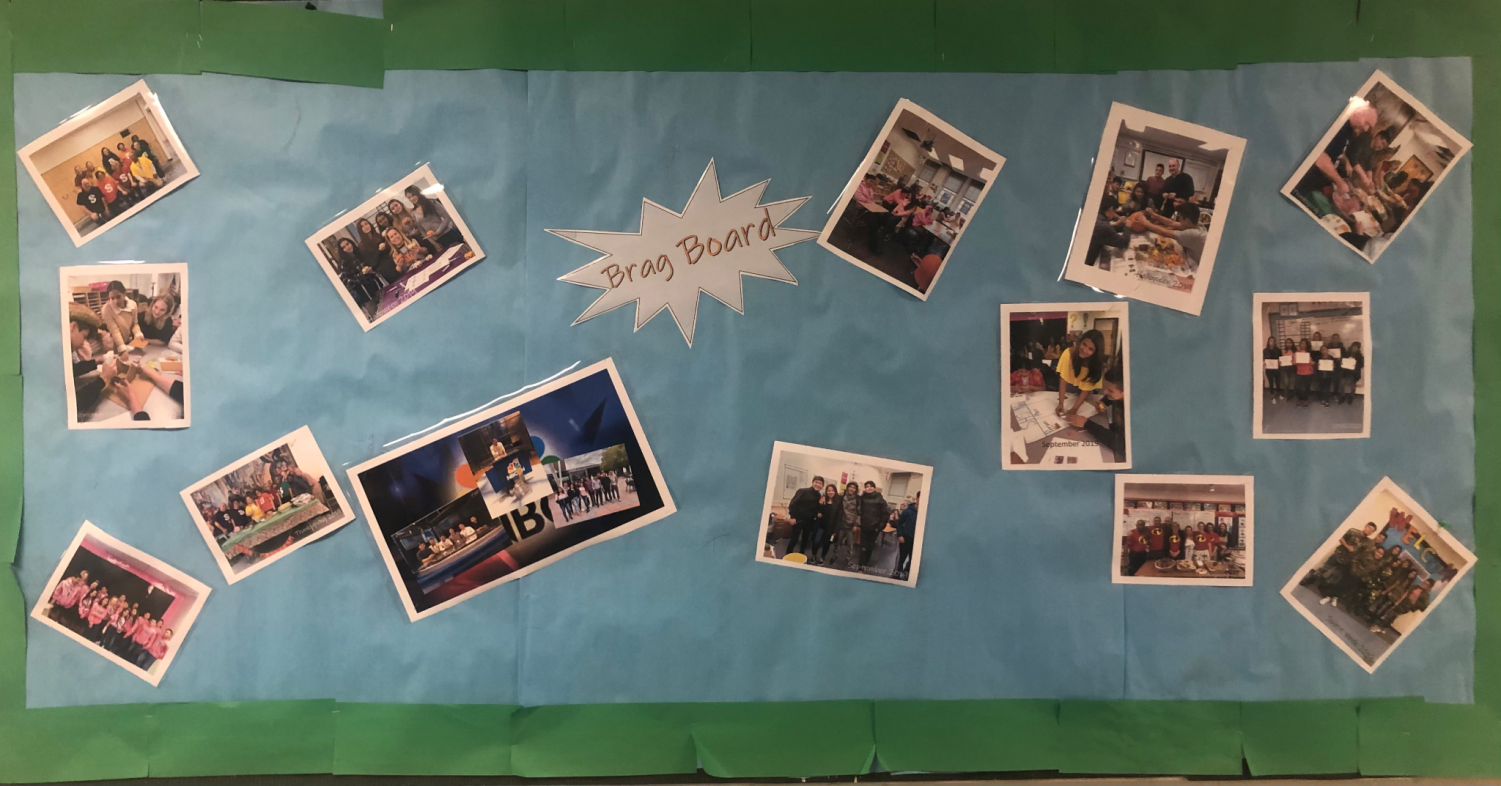A Closer Look at the ELL program in Stamford Public Schools
June 1, 2021
A Brief History of the ELL Program
Stamford High School is an institution that hails in diversity of culture and language. With hundreds of students all coming from different backgrounds, it is only fitting to establish programs that would help out newcomers who needed to be acclimated into the environment with a different type of education.
In comes the ELL program. The English Language Learners program allows for children who are new to the country to learn with methods that are best suited to their current abilities with the English language. In Stamford High, there are more than 200 students currently enrolled in the program, with over 20 languages spoken. With an approximate population of 1,800 students, 1 in 9 children are a part of the program. Despite a settled Department of Justice investigation, there are still some issues lingering with the quality of education and access to resources that some ELL students are receiving.
Back in 2008, the Justice Department began an investigation into the ELL program due to potential civil rights violations. They sought to identify “the adequacy of the District’s provision of English Language Learner (ELL) services, teachers, materials, and special education services to ELLs, its monitoring of current and former ELLs, and its evaluation of its ELL programs,” according to the settlement agreement between the DOJ and Stamford Public Schools. The DOJ alleged that inadequate resources were being provided to these students, and the investigation went on for six years before being suspended when the DOJ determined students were receiving a proper education. The assistant superintendent at the time (and current superintendent) Tamu Lucero commented on the progress of the investigation back in 2013, saying, “It’s going well.”
Millions of dollars were allocated to the program in 2014, and further drop-ins were done by the DOJ, but their general hands-on action diminished within a few years.
Experiences of Current SPS Students

Current SHS sophomore Kiara Loayza came from Peru, where she considered the education system to be far more advanced than in many other countries. “I have had a generally good experience here,” she said. “I have had many opportunities like the upcoming IB program I will be a part of. My schedules have always worked out, and I have always received good comments from my teachers.” Loayza experienced the best of the ELL program; this opened many doors for her.
However, Loayza said she also knew a current senior from Westhill whose experience was contrary to hers. “He wanted to study dentistry, but was told that he didn’t have the chances to make it in that career,” Loayza said. “He wasn’t given the classes he needed in order to understand this topic and ended up having to repeat a year.” This common issue of scheduling and taking classes that are a waste of time were a recurring complaint among students interviewed for this article.
Current junior Emmanuel Pariente from Westhill High School came from Peru back in 2016 when he was a 7th grader at Cloonan middle school. Now an upperclassman, Pariente does not have any more sheltered classes currently in his schedule. Pariente said that guidance counselors at Westhill gave him more issues than the actual classes did.
Upon the first day of high school, Pariente said he felt lost and confused. “My guidance counselor didn’t give me any advice on where to go,” he said. “She just handed me a list of my classes and kept saying, ‘Go on, next,’ It felt really cold.” Now with almost three years at the school, Pariente says he can summarize his experiences with guidance counselors easily. “Guidance counselors were not helpful in my school,” he said. “It didn’t seem like they cared about us as ELL students.”
Pariente also recounted having issues with teachers, saying, “I heard multiple teachers say really rude things like ‘Why are they here?’ I mean, who was the teacher trying to refer to when he said ‘they’? It made me feel like the teacher didn’t want us there.”
According to Pariente, the teacher said this after one student had disrupted the class and was misbehaving, yet used it to generalize a certain group of people. Pariente felt that prejudice played a role when teachers made comments that were disrespectful in nature. “Sometimes it feels like the staff has a certain image of us,” he said. “As if they all see us as the same, like we don’t care about our education at all. It felt like some teachers generalized us into one category.”
When students develop this understanding of teachers, it makes it easier to give up and not care for their education. When there is no push to be better, ELL students are facing the difficulty of battling two languages, learning high school level content and experiencing contempt from teachers, some of whom, according to Pariente, “lack the patience and consideration to teach ELL students.” Pariente said he occasionally felt that the program gave up on their students. “Sometimes it feels like it was created for us to fail, like they don’t care where we end up in life,” he said.
Pariente was quick to add that this was not the case the entire time, expressing a sentiment that was common amongst ELL students interviewed: “Don’t get me wrong, there are some teachers that have been really nice to me and helpful.” In fact, all students interviewed expressed gratitude for various teachers that helped them along the way through high school.
While the ELL program in Westhill and Stamford High have completely different practices, this common theme of issues with guidance counselors crosses the boundaries of school lines. The staff available plays a vital role in the education that students will receive throughout their years of high school. However, some students interviewed said guidance staff had not been particularly helpful.

One such student is current senior Daphca Samedy, who came to the U.S. from Haiti but is originally from the Dominican Republic. Samedy said that her guidance counselor was so unhelpful that she tried to get her little sister placed with another guidance counselor. Samedy said she believes that a key part of a student’s success in going beyond high school and off to college is for ELL students to be paid attention to. “Pay more attention, not only when the time comes for a student to graduate, but to guide them in the classes they need to take,” Samedy said, adding that this piece of advice is for both ELL teachers and guidance counselors.
Experiences of a Former SHS Student
Former SHS student Alejandro Taveras was part of the class of 2019. He came from the Dominican Republic during the second semester of his sophomore year. After high school he spent a year working and saving his money; he then applied to go to UCONN Stamford and received a full ride.
Taveras, alongside his twin brother Adrian, were considered the top students in the ELL program. Due to this, Taveras recognized that not every other student received as much attention or praise as he did. “I know I was given more attention because of my grades, but I had to put in my own work outside of school watching hours of videos trying to learn English,” Taveras said. “I used Duolingo and YouTube videos in order to learn the language for two years. I couldn’t do regular classes while learning English at the same time.” This extra time to practice the new language is not an option for many ELL students. A large portion of students have jobs and/or childcare responsibilities outside of school and dedicate themselves to these tasks in order to help provide for their families.
Throughout his time in the ELL program Taveras was also faced with difficulties with staff. He said that in order to make the program even better for students, “They need to improve how diverse the staff is.” At the same time, Taveras realized the struggles of the staff, saying “My ELL classes were always full. It was difficult for the teachers. That’s why they couldn’t give enough attention to the students.”
When it came to college, Taveras explained that he did not receive help or information on college whatsoever; it was not discussed as an option by his teachers or his guidance counselor. He recounted that the only person that was his saving grace was Ms. Forlenzo, who was not his own counselor, but attempted to help him in any way she could.
College is often not thought to be the end goal for ELL students in the same way that it is for students who are not in the program. Throughout the process of applying to UCONN, Taveras was not familiar with some of the basic elements involved in the application process, such as FAFSA, CommonApp, and the SAT.
“They should’ve at least told me my options,” Taveras said. “With the SAT, I took it without knowing English. It was really bad. It was really weird for me. I had no idea what I was doing. I remember in the last section I just put everything wrong. I was tired of it. It was overwhelming,” he said. Taveras is not alone in being frustrated by having to take a test he had no background knowledge on. While the SAT remains a standardized test, the fact remains that half of it is based on one’s proficiency in the English language. It is a tiresome test even for those that are fully prepared for it.
As Taveras progresses through his life post Stamford High School, he says he has come to realize how rare his story really is. “I knew everyone in the ELL program and everybody knew me,” he said. “Out of all of the kids that I graduated with and I know personally, none of them have gone to or plan on going to college.”
Like the other students interviewed, Taveras expressed gratitude toward his teachers.“I’m incredibly grateful for the teachers, and especially [Dr.] Lawson,” he said. “They helped me feel comfortable and pushed me to work hard, but I wish I was more informed on the college process like kids outside of the ELL program were informed.”
A Simple Solution to a Complex Problem
A staff member with direct involvement in the scheduling process claimed that the Stamford Public School system has established a one-size-fits-all type of school year and a curriculum that simply does not function for everyone. “It is really difficult to be thrust into English-speaking classes when you have zero English experience. I would love for there to be a more intensive option for students to start with and then join the regular curriculum,” the staff member said.
There are many challenges associated with learning a language and high school level concepts at the same time. Even with millions of dollars put back into the program after the investigation, Stamford Public Schools cannot always accommodate the true needs of students who come here with little to no English experience. However, the staff member said that Stamford High School itself is not specifically to blame. “This definitely comes from the district and comes down onto us. We don’t have a lot of options. It is all determined on the district level and budget level,” they said.
Teachers and students are not always involved in the decisions made about the well being of these children. School staff that are involved with the ELL program seem to be doing all that they can, but there are certain limitations they must work with. For example, not all ELL students come from the same countries, situations or living experiences. Some have experienced disrupted learning (meaning, for example, that their last education was when they were in the third grade in their native country and they are now suddenly of high school age and meant to understand highschool level content).
There are also a variety of yearly school schedules all around the world, making it so that if a student comes at a certain point during a semester they can no longer receive credit. This is unfortunately why, as the staff member explained, “Many students who come after a time when credit can be awarded will often get either study halls or actual classes, but they will be audited. That means the student has come too late to receive grades or credit from any classes.”
There is little that can be done on a school level, since many of these protocols are decided by the district and go to the level of the state. While the DOJ established new elements into the ELL curriculum and methods to test students based on their levels in English, the fact remains, according to the staff member, “High school is set on such a traditional system of earning credits, passing certain classes and moving on. It is not the best system for some students at all. It is like a ‘one size fits all’ system and it is not appropriate.”
Successes and Areas for Improvement
The current director of the ELL Department at Stamford High School is Dr. Kristina Lawson, who has worked here for over ten years. Lawson says she is certain that there have been a multitude of changes since the DOJ investigation that have solved many of the original issues. She believes there are issues with determining the success of a student’s education by the graduation rate for ELL students, since there is wide variety in the amount of education each child has received and what credit will transfer from their education in their native country.
Lawson said one major change that has added to the successes of the ELL program in Stamford Public schools is how their level of proficiency is measured. Students are looked at by their proficiency and are given systems of support according to that level. “Some of my students, college is not their goal,” Lawson said. “Many of them have the goal to learn sufficient English. It is all up to the student.”
Of course, there will always be areas for improvement. Lawson recognized that the settlement from the DOJ did not fix all errors, but said that there are three main issues that must be addressed.
One is that many ELL students could have faced very traumatic lives prior to coming to the United States. Lawson wants the staff to be ready to handle these students in the best way possible. “We have to focus on the social and emotional needs,” she said. “My students share a lot of personal traumas with me. As a department, it is something we are starting to get training in too, in how we can best support our students.”
The second issue is staffing, which was a common complaint amongst most students interviewed. Lawson was in complete agreement, saying, “If there was an area for which we really needed more support, it is having access to more trained professionals who can work with our students in their home language to provide them the support they need and when they need it.”
Lawson said that the final and most frustrating issue of them all is dealing with the guidance staff. “Repeat training has occurred, repeat clarification, repeating scheduling with guidance has happened and it continues to be a retraining issue every year, so I completely understand how frustrated the students are,” she said. Although the district met the requirement set forth by the DOJ that they provide “training to all personnel at each school who are involved in assigning/scheduling ELLs to classes, including appropriate guidance staff,” Lawson said the issue still remains even after more than ten years since the initial investigation.
Lawson said that earlier in the school year, after a meeting with the head of guidance staff, Geraldine Nuzzo, Dr. Berlage, and other staff members, it was determined that many children who selected their classes with individual ELL teachers were not placed in the classes they had selected. Many ESL students did not understand how to schedule their classes, which is why many ESL teachers had to sit down individually to run down every single class they wanted for the following school year. Lawson said, “It is a complicated process due to the amount of moving parts.”
There did appear to be some inconsistencies with the agreements made in the settlements, however Dr. Lawson believes them all to be withheld currently.
Do the experiences described by Taveras and Pariente, who said they lacked help from guidance staff and needed more direct help with learning English, represent an inconsistency with the DOJ settlement? The settlement states, “If an employee learns that any ELL is not receiving adequate and appropriate ELL services, as required by this Agreement, the employee shall immediately notify the ELL Administrator and the District shall take reasonable steps to ensure that the ELL receives such services within 30 days.” Lawson expressed confidence that this was the case, saying, “Every kid is receiving what they should be per the agreement. Services are more than adequate here in the school district.”
Lawson also addressed another possible discrepancy – a shortage of appropriately trained staff. According to the agreement, “the District shall actively recruit bilingual staff, staff trained in working with ELLs, and staff with fluency in one or more of the languages of the District’s ELLs for relevant teaching and administrative positions, in particular for Special Education teacher and paraprofessional positions.” While there is currently the option for incoming students to decide Bilingual Instruction, many opt for (or are often placed in by default) the ELL option.
Lawson said she has an issue with students critiquing the staff available to them, since often those same students did not choose bilingual instruction in the first place. “Bilingual staff is readily available for those that chose it in Spanish and Kreyol, ” Lawson said. “Parents differ in what they want to give their children. Some want education in English or in their native language. It’s also difficult for us staff since we cannot help decide or advise their parents what would best suit their child based on their needs.”
While bilingual education is an available option to all, the ELL education is the default placement for students in the case that they do not explicitly pick bilingual education or the New Arrivals program. Still, a common complaint amongst Hispanic ELs interviewed was that they wish there were more teachers fluent in Spanish.
The most notable improvement and changes Lawson acknowledged were “the centralization of our registration experience” and “materials and training programs.” She added that the service agreement spelled out that students who are English language learners “will receive support based on their level of proficiency.” The registration process that has completely changed the methods of the ELL program in Stamford Public Schools was once conducted at a school level, but now is done at the ELL department in Stamford Public Schools.

The current coordinator of English learners, Monica Lahiri-Hoherchak, said that whenever parents are present, they are made as involved in the process of their child’s education as they can be. “We talk to the parent, with the student present, about the programs available. We also have a video they can watch before we talk with them,” said Lahiri-Hoherchak. “This helps them to think about any questions they may have for us. They can make a decision about which program they want for their child at that time and sign a consent form.”
In the case that parents are not able to be present, Lahiri-Hoherchak makes sure they have tried everything prior to moving forward. “We call the parent, WhatsApp the parent, send a letter or email the parent. All of those are to tell the parent that the child has qualified for EL support and we’d like to schedule a time to talk to them,” she said. In the case that there can be no communication made, the ELL program is the default placement. “If a student qualified for an ESL class, we give them that class even if we have not yet been able to make contact with the parent or guardian. We do not place a student in the New Arrivals program or Bilingual program without parent consent,” she said. Lahiri-Hoherchak added that the ELL program at Stamford Public Schools is “continually learning and growing based on data and community conversation.”
The Future of the ELL program
The DOJ settlement brought a new age for the ELL program available in Stamford Public Schools. Some unsettled issues still remain; however, much is decided at the city level and is passed down onto the building staff. All students interviewed said that the ELL staff at Stamford High care deeply about their students, and attempt to do what is best for them. Some wrinkles are more difficult to iron out than others, but overall, most EL students are generally content with the education they’re currently receiving.



